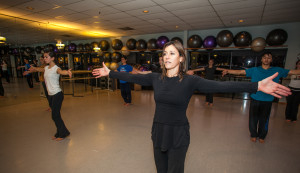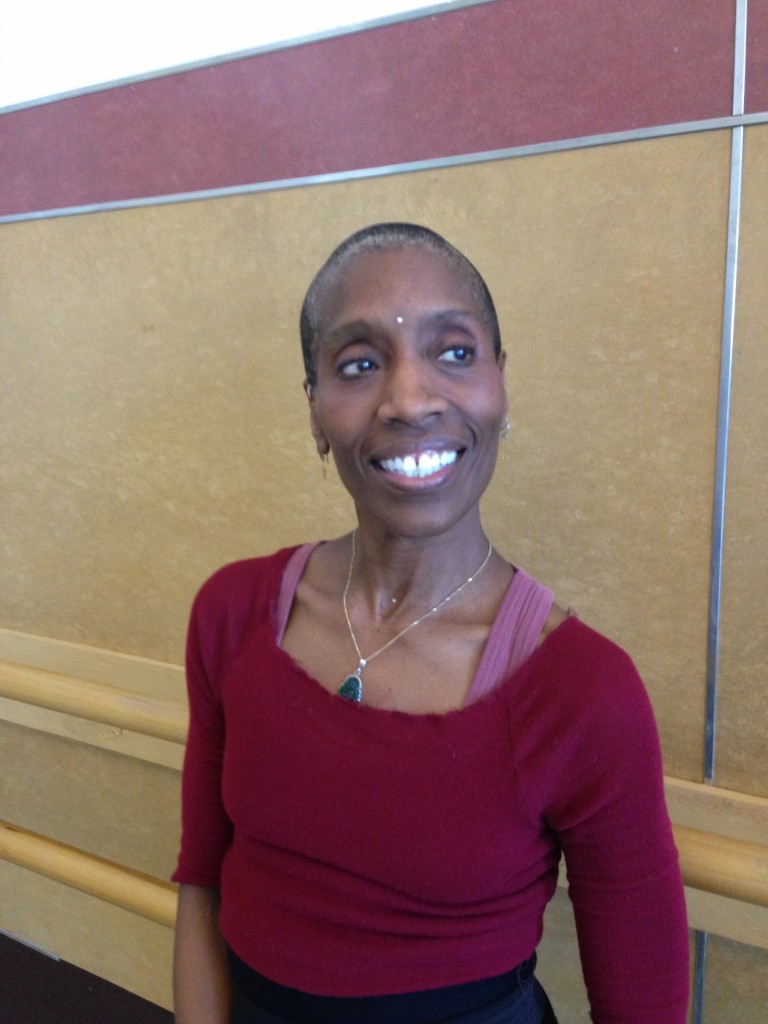
When I set out to talk with local dance teachers, my aim was to bring more attention to the many great and dedicated teachers we have here in the San Francisco Bay Area. Along the way, I’ve gained some great inspiration from teachers of young children—Takami Craddock and Corrine Nagata—teachers of adults, college students and professionals—Diane Frank, Nina Haft, Christian Burns, Katie Faulkner and Kara Davis—and most recently from two educators who between them have over 50 years of experience working with teens—Elvia Marta and Annie Parr.
Once I heard a radio program about life during middle school in which a psychologist stated that life-long passions are typically discovered during the middle school years. He described those formative years as the age at which one is not only developmentally poised to learn new skills, but also able to enjoy a sense of achievement and self-esteem cultivated through hard work. He pointed out that while learning at this age (13-17) is at an apex, teens are unpredictable, impressionable, strong-willed, vulnerable, critical and deeply concerned with how others view them. The radio program went on to highlight various teachers who were possessed of that unique combination of skill, charisma and sensitivity making them effective at teaching teens despite the turmoil.
Early in our conversation, Marta was quick to point out that something else is also essential.
“One of the things I’ve noticed that really helps that I do is the hugging,” she says. “There is a lot that you can transfer in a hug and it opens them up.” She says simply, that love is at the center of how she works with her teenaged students. “They need people to teach them and love them, because if you can win them with love they will trust you and then you can really teach them.”

A well-known hugger to many others too and the director of the dance program at SOTA (Ruth Asawa San Francisco School of the Arts) since its inception in 1982, Marta is known for pushing her students hard to improve their technique while striving for something deeper. “A lot of schools are focused on making perfect shapes and they don’t focus on connecting the dots for the kids. They get stuck in a way of moving that doesn’t have expression and in my program, you have to have expression and you have to work really hard.” She adds, “I’m very demanding and I believe in a dancer being really well-rounded.”
“In essence, I just want to give back,” she says. “Dance is a vehicle for so much else—self-esteem, discipline, community, integrity, to learn who they are and how big their power is. I use dance as a vehicle to teach all of this and to love them, because they need love and to keep remembering that they are valuable.”
Marta says that nearly all of her SOTA students go on to college dance programs or to join professional companies. She has former students who have danced with Alvin Ailey American Dance Theater, Philadanco, Martha Graham Company and Hubbard Street. Others have gone on to attend Julliard or into teaching professions at colleges, high schools and studios.
Parr, the owner of Roco Dance and Fitness with studios in Mill Valley and Fairfax, is a big proponent of college dance for her dedicated teens. “I push kids to major in dance for their undergraduate years because I don’t think it matters what you major in, so why not dance? It can inform so many aspects of your life, why not spend those four years doing something you’re passionate about, rather than floundering about trying to figure it out? It will propel you either deeper into that form or into something else.”
Currently Parr’s schools provide dance and fitness for youth and adults, serving between 700 and 900 students annually, and presenting a major spring concert every year, but she admits that when she started her youth program, “I was afraid of teaching kids. I didn’t know how to really. So I hired experienced people, and they built my youth program, not me.”
A modern dancer at heart, she has been intent on offering quality modern training while also producing major student performances every year. “Our modern youth program has really taken off—it’s the biggest part of our program. Kids are dancing because they want to perform. Performing hooks them into their training. Learning choreography, being on stage is the fun stuff. They buy into the purpose of training, but they look forward to the performance.”
But Parr is clear not to put all the emphasis on performing, she says, in spite of her students urging her to join competitions and include more tricks in class, apparently inspired by what they’re seeing on popular television dance programs. “I luckily have a program where we encourage kids to study all forms. The kids who are more serious have to study ballet and modern weekly. We offer hip-hop and jazz and opportunities for them to supplement with other types of classes. In order to get into those classes, they have to have the ballet first. I don’t want lots of kids in high level jazz classes without the technique to support it.”
Likewise, Marta isn’t swayed by passing fashions when it comes to her program. “I have a really diverse staff,” she says, “And between us we have done everything. We all take class, we see everything, we talk about everything and stay current, and between us we do all of it. We see what’s happening—what are people doing, how are they reinventing the wheel and it re-inspires us all the time.”
Both Parr and Marta provide their students with teaching opportunities, recognizing the benefit to the student of putting them in front of a class and in a position of determining what is important to teach. At SOTA students are frequently asked to lead portions of a class or teach a warm-up for a rehearsal, with special attention placed on breaking material down and finding the appropriate language to guide a student. At Roco, Parr says she maintains a guidance and training program in order to keep up the standards of her program. Meanwhile she plans to dedicate more toward training teachers. “That’s kind of the future for me—putting a more formalized training program together. There’s a constant cycle and demand for good teachers.”
I asked Parr how she knows when a teacher is right for her faculty. “My best teachers were people that came to me with a way of teaching in general that I hadn’t even thought of before. And teachers who were able to grab students’ attention and keep it. There are some teachers who have this exceptional gift at engaging, because if you don’t have that it doesn’t matter what you’re teaching.”
I asked Parr if she remembers what it was like teaching her first dance class.
“The first modern class that I taught was a disaster!” Parr recalls that she had no training as a teacher, but that over time and by building on what she knew, she got better at it. “I taught myself how to teach. It was a really laborious and time-consuming endeavor, but I had a natural knack for it. I was athletic and I liked working out. I could kind of link the dance with the fitness, and that helped, but, boy, do I wish I had been trained. It would have knocked years off my process of learning how to teach well. It takes decades to learn how to teach well.”
Marta recalls being practically hoodwinked into teaching by a teacher who recognized her potential early on. She was accompanying her Balboa High School teacher Yvonne McClung to a teachers’ conference in Hayward where another one of her beloved mentors, Raymond Sawyer, was to give a master class. “In the car on the way there, Ms. McClung told me that Raymond was sick and wasn’t coming. She told me I was going to teach. I wasn’t prepared to teach. I said, ‘What am I going to do?’ She said, ‘Just do what Raymond does.’ I taught my first class to teachers from all over the nation. I taught them Raymond’s class. I blew them away. I got job offers.” She says the response was life changing. “Ms. McClung knew I could do it. I feel very fortunate that she recognized that in me.”
One parent I talked to recently, referring to her child’s dance teacher, said, “I would send my daughter to her even if she taught welding. She’s that good.” Great teachers are indeed masters of the art of imparting knowledge, possessed with great skill and the ability to connect with their students in meaningful ways. Great dance teachers can sometimes seem like mystics, wise men and women who can guide us through amazing transformations, help us unlock aspects of our bodies or our thinking, and turn us over to the joy of dancing. Whether a teacher of kids, teens, adult beginners or professionals, great teachers are undeniably some of our best treasures. With luck, we encounter them at the right time and they give us the tools to keep dancing for life.
This article appeared in the June 2014 issue of In Dance.


